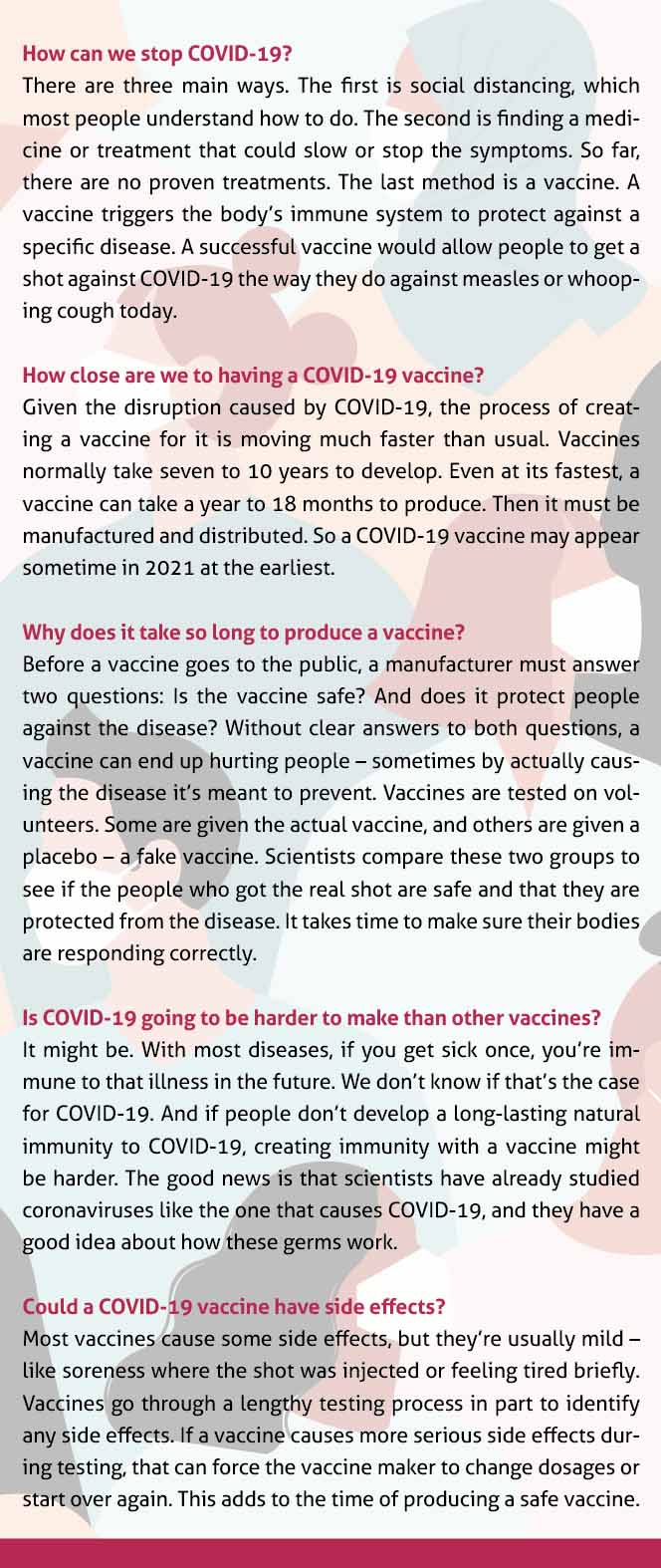Of all the solutions to the COVID-19 pandemic,
a vaccine is the most attractive. With just one shot, people could transform
the disease from a global disruptor to an easily manageable public health
problem.
But vaccines can’t be
whipped up overnight. Typically, they take seven to 10 years to produce, says
Dallas epidemiologist Robert Haley, MD. Even a vaccine on the fast track – and
COVID-19 is on the fastest track possible – could take up to 18 months, he
says.
The race to find a vaccine
has been on ever since China published the genetic sequence of SARS-CoV-2, the
virus that causes COVID-19, on Jan. 11. All U.S. vaccines have to be licensed
by the Food and Drug Administration, and dozens of private labs and researchers
are working hard to reach that goal.
But many of them won’t make
it because “a lot of what looks like it’s going to work [in the laboratory]
doesn’t immunize,” Dr. Haley said.
Vaccines that do show
promise must go through extensive clinical development and testing, a
three-phase process that consumes most of the time for vaccine development and
ultimately requires human trials to ensure safety and efficacy, followed by
regulator review and approval,
manufacturing, and quality control (tma.tips/CDCVaccineApproval).
“The most important thing with a vaccine is
that it works and that it’s safe in large numbers of people,” said C. Mary
Healy, MD, a member of the Texas Medical Association’s COVID-19 Task Force. She
is associate professor of pediatrics and infectious diseases at Baylor College of
Medicine and Texas Children’s Hospital in Houston.
The fact that COVID-19
involves a new virus could impact the learning curve and timeline for vaccine
development in this case, Dr. Healy adds.
“We
need to remember that it’s a process,” she said. “And while it’s being
expedited, it can only be expedited so much.”

Tex Med. 2020;116(6):19
June 2020 Texas Medicine Contents
Texas Medicine Main Page